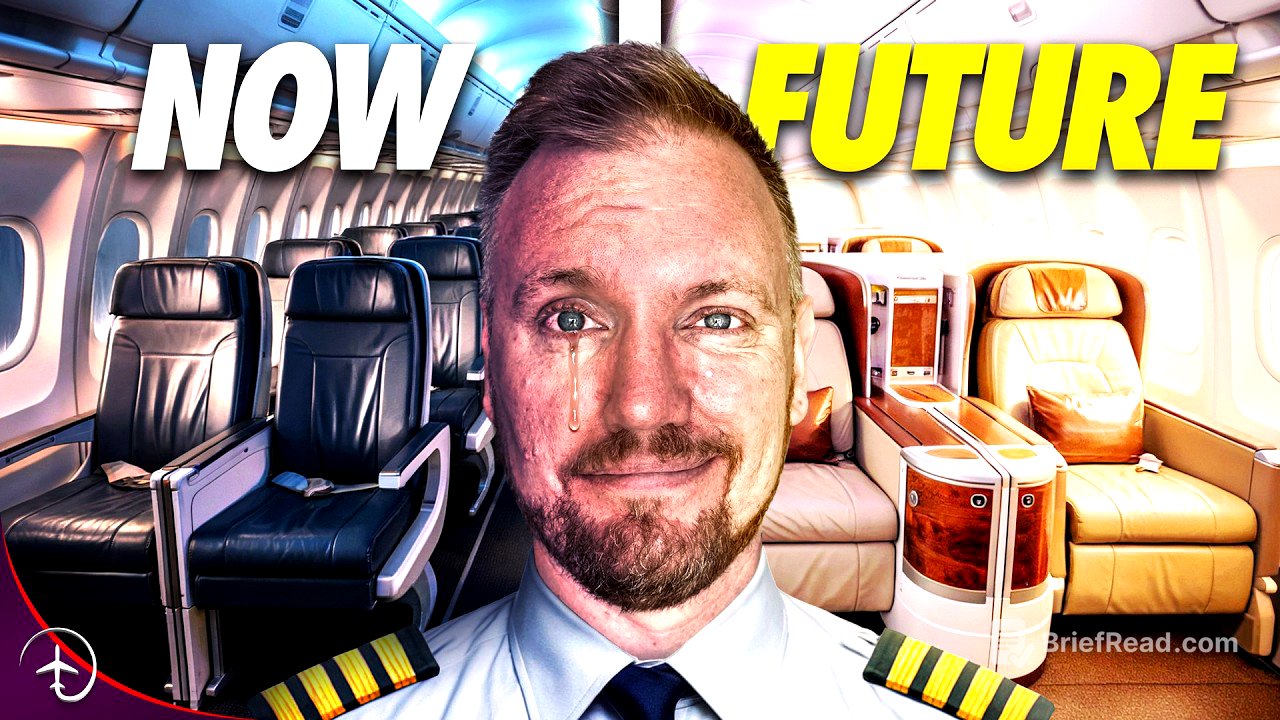TLDR;
Airlines are increasingly focusing on premium cabins (business and first class) despite global economic uncertainties. This shift is driven by the higher profitability of premium seats, which can generate a significant portion of an airline's revenue. Airlines are investing heavily in luxury experiences, from exclusive airport services to high-end in-flight amenities. This trend is influenced by factors such as the willingness of leisure travelers to spend more and the changing nature of business travel.
- Premium cabins generate a disproportionate amount of airline revenue compared to economy class.
- Airlines are investing heavily in luxury experiences to attract and retain high-paying customers.
- The trend towards premium cabins is influenced by changing traveler preferences and the economics of long-haul flights.
Intro [0:00]
Airlines are moving towards premium-heavy configurations, featuring business class, first class, and super business suites, despite global uncertainties like fuel prices and unstable demand. This strategy involves reducing the number of seats to provide more space and luxury for higher-paying passengers. The trend raises questions about its sustainability and the implications for passengers who cannot afford premium travel.
How Airlines Make More Money From Fewer Passengers [1:19]
Airlines prioritize premium cabins because they generate significantly more revenue than economy class. Premium passengers, comprising about 5% of international travelers, contribute approximately 20% of airline revenue globally, and nearly 30% on long-haul routes. This strategy focuses on selling fewer seats at higher prices to ensure profitability. Airlines offer a comprehensive luxury experience, including private check-in counters, exclusive lounges, lie-flat beds, and gourmet meals, to justify the higher cost of premium seats.
How Much Does Business Class Cost? [4:46]
Business class seats can cost three to six times more than economy tickets, while first class can be 10 to 15 times more expensive. Modern business class seats can cost $100,000 to $350,000 per unit, leading to millions in cabin investments. These seats require more maintenance due to moving parts and complex entertainment systems. The soft product, including full-service dining, designer amenity kits, and premium alcohol, adds to the cost. Business and first class cabins are labor-intensive, requiring more experienced flight attendants with higher salaries.
Is Business Class Worth it? [7:57]
Airlines need to carefully consider how they deploy premium services to ensure profitability. A fully booked business class cabin can generate more revenue than the rest of the airplane combined. Premium passengers contribute significantly through loyalty programs, credit card partnerships, and elite tiers. Airlines are willing to invest in expensive seats and services if they can fill those seats and retain passengers. Leisure travelers are increasingly willing to spend more, and business travelers have fewer budget constraints.
What Happened to First Class? [10:03]
Gulf carriers like Emirates and Qatar Airways built their identities around premium service, offering luxurious amenities such as marble showers and lounge bars. Asian carriers like Singapore Airlines and Japan Airlines are known for meticulous service and ultra-premium cabins. In the United States, American carriers initially focused on survival after 9/11, leading to the decline of international first class. However, US airlines like United and Delta have since invested in premium cabins, with products like United Polaris and Delta One suites. These airlines are now learning from each other, blurring the lines between different approaches to premium travel.
Why Do Some Flights Have Better Seats Than Others? [19:55]
Airlines strategically deploy aircraft with different cabin configurations based on the route's demand profile. Routes with high-yield corporate travelers and affluent leisure passengers justify aircraft with La Première suites and large business class sections. Leisure-heavy routes get aircraft with more economy seats and smaller premium cabins. This strategy allows airlines to tailor their product and profitability to fit the demand of each market. Cabin layouts are long-term investments that require years of planning and coordination. Airlines that invested in cabin retrofits during the pandemic are now benefiting from the surge in premium demand. The premium boom is creating challenges such as lounge overcrowding and loyalty program strains. Traditional business travel has evolved, with more blended travel and a new type of high-value customer. Airlines are betting that travelers will continue to pay more for a better experience. The declining number of economy seats may lead to higher prices for economy tickets.
